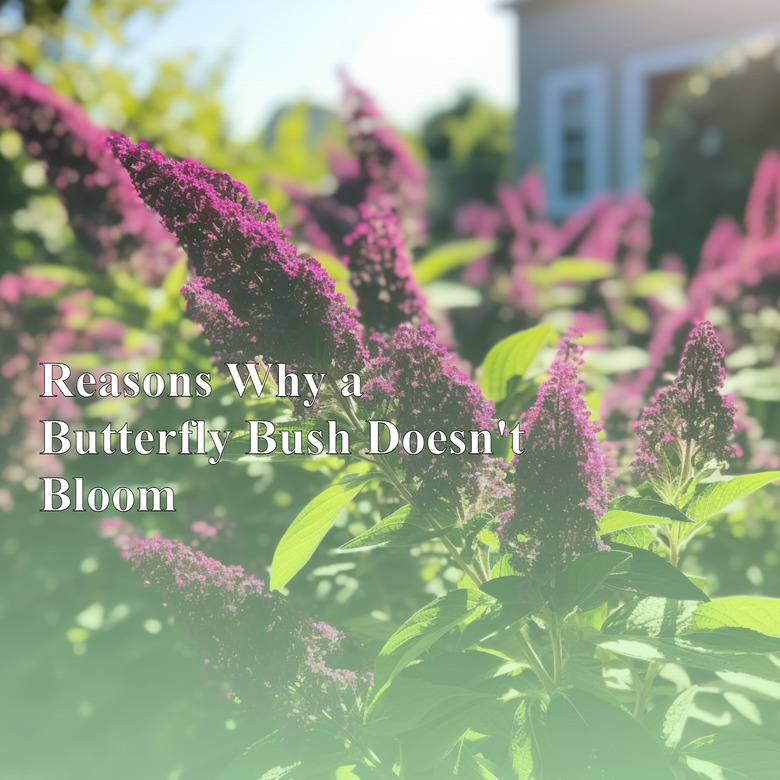Reasons Why A Butterfly Bush Doesn't Bloom
Attracting a whirlwind of bees and butterflies to a garden, the butterfly bush (Buddleia davidii or Buddleja davidii) is grown through regions rated USDA Hardiness Zones 5 through 10. It is a sun-loving shrub that should be pruned back in the early spring to promote new, lush growth that will be topped with spikes of flowers when summer starts. A moist, well-draining soil with organic matter produces the healthiest plants.
Inadequate Light
Butterfly bush needs a full to partial sun exposure in the garden to encourage prolific flowering. That means the shrub should receive more than six to eight hours of direct sunlight daily during the growing season. Inadequate light either delays flowering or greatly diminishes the number of flowers.
Environmental Stress
Although not common, extreme stress on a butterfly bush can affect its flowering. Excessive drought, to the point lwhen leaves continually wilt or shrivel, or little spring new growth may retard flowering later. Conversely, soggy soil can lead to rotting roots. Chewing insects like grasshoppers or beetles and even grazing animals can chew off flower buds and leaves. Plants under stress will conserve energy for flowering to put it toward simply surviving adversity.
Planted Too Deeply
If plants are placed too deeply in the soil, negative changes in plant growth, flowering and health follow. Appreciating moist but well-draining soil, the butterfly bush should be planted at the same level as it was growing in the container from the nursery. In heavy clay soils, the root ball of this shrub can be 1 to 2 inches above the rim of the planting hole.
Short Growing Season
The butterfly bush needs a warm growing season free from frost to produce its flowers. This is usually not a problem in most of North America, but plants that are seedlings, or simply not mature, won't flower if the days are short and cool as in spring or fall. Lots of warm sunshine and temperatures above 75 F promote flower development.
